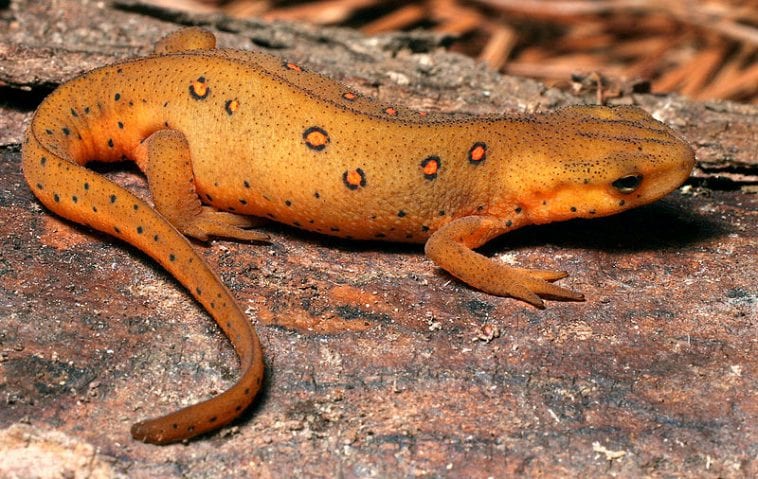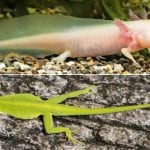The exotic pet trade market is one of the most unique and diverse industries in the entire world because of how it is full of different creatures that each have their own traits that make them ideal pets for a lot of owners. While reptiles usually are the more popular choices for a lot of pet owners in the exotic pet trade scene, amphibians are making their way up the ladder. One such amphibian is the newt, which is becoming a really popular choice for a lot of exotic pet enthusiasts all over the world.
Newts are some of the more unique amphibians in the industry because of how endearing their attributes are. They look like lizards but are actually classified as amphibians instead of reptiles. And what makes them even more amazing is that they actually look cute and adorable.
So, if you want to take care of a newt expertly, here are some things you need to know about this amphibian.
Overview
The newt is an amphibian that, in some ways, resemble a lizard but are not reptiles. There are several reasons as to why newts are classified as amphibians instead of reptiles. First off, they are semi-aquatic animals that tend to dwell and reproduce in water. Newts also have smooth skin and have no scales, which reptiles normally have. And probably the most definite reason as to why they are amphibians is that they follow the usual life cycle of an amphibian in the sense that they start out as tadpoles and will eventually morph into the semi-aquatic adults that look a lot like lizards.
Newts have a very wide distribution as you can basically find them in any kind of content so long as the living conditions there suit their needs. You can find them in Europe, North America, Asia, and even in Africa. Most newts are found in northern areas, but there are some that can be found in southern areas as well, so long as the conditions in those regions are cool and moist. While the care requirements of a newt vary depending on where they are native to, most of these amphibians tend to have similar demands from their owner and are basically interchangeable so long as the owner is skilled and knowledgeable enough in what he is doing.
Physical Description

While newts vary in appearance depending on where they are native, they have a lot of common characteristics. Most newts tend to have bodies that are relatively dark in color. Some are brown; there are others that are green, while some newts have olive-colored bodies. However, there are also newts that are brightly colored, such as those with bodies that are orange, red, or yellow. This really usually depends on the species of newt you have and where you acquired it from as the environment; it is native to plays a huge role in determining its color.
Newts generally look like salamanders in the sense that they are amphibians that resemble lizards in terms of their appearance. They both have legs that are equally-sized and have skins that are semipermeable. However, most newts do not have skins that are as smooth as a salamander’s as there are species of newts that actually have rough skins. Other than that, newts and salamanders are basically the same in terms of their appearance because they are of the same kin, after all.
Because there are plenty of species of newts, they actually differ in terms of their size. However, they usually look the same in the sense that they have legs that are equally-sized and have tails that are really long. Other than that, they differ in size and appearance, but most newts rarely exceed 8 inches in terms of length from snout to tail. Most newts weigh about a third of an ounce at the maximum.
An amazing attribute about the newt is that it has the ability to regenerate several parts of its body. Unlike lizards, which are usually only able to regenerate their tails, newts can regenerate their limbs, eyes, jaws, and organs such as the heart and the intestines. These are really fascinating amphibians that have cool attributes. It is believed that newts are able to do this because their cells do not differentiate one part of the body from the other and will continue to rapidly reproduce at the site of the newt’s injury.
Diet
Newts are carnivorous amphibians that prefer to eat anything that is meat-based. Amazingly, they have a diet that is more diverse than lizards and reptiles of their size because of the fact that they are semi-aquatic animals. That said, most newts can eat all sorts of animals that are smaller than they are regardless of whether they are terrestrial or aquatic animals. Newts eat small invertebrates, which is similar to what reptiles of their size do. However, they also feed on slugs, insects, and amphibian eggs whenever they are on the land. In the water, their diet is pretty diverse as they can eat small fish, shrimps, larvae, mollusks, tadpoles, and even fish eggs. Meanwhile, baby newts eat shrimps and insect larvae as they are still water-dwellers at that stage in their life.
In captivity, since the newt won’t be able to find shrimps, fish, and larvae in their captive habitats, it will be better for you to stick with insects and other invertebrates. You can go with crickets and mealworms, but you can also choose earthworms if you want since a lot of different species of newts love eating earthworms as well. If you want to diversify their diet, you can go for glass shrimps and brine shrimps. Blackworms and bloodworms also tend to be some of the favorite meals of most newts.
Habitat

The enclosure of a newt should depend on how big your newt is. However, since most of these amphibians barely grow over 8 inches long, it is safe to say that you can do well with a tank or an aquarium that is about 5 gallons big. But since you can house more than one newt in a single enclosure, you can go as big as you want to depend on how many newts you want to keep. Of course, the more newts you are keeping, the larger the tank should be. As such, you may want to go for a tank that is about 20 gallons or more if you intend to keep more than a handful of newts in a single enclosure.
Since newts are semi-aquatic, the terrarium or the tank should have parts that are devoted to water. It really depends on the species of newt you have, so you really have to do your research before you decide on how large the aquatic area in the enclosure should be. You might want to go 70% water or 50% water. However, there are actually species of newts that can spend all of their lives living in an enclosure that is mostly water. Meanwhile, newts that are used to the Pacific are mostly terrestrial than aquatic but will still need to spend some time in the water. Again, it really depends on the species of newt that you have.
Newts prefer to stay in places that are somewhat close to tropical temperatures but not exactly too warm or hot. The hottest that the temperature in their enclosure should be is not more than 75 degrees Fahrenheit. However, there are newts that are able to survive temperatures hotter than 80 degrees. Meanwhile, when the temperatures are close to freezing, the newt will almost instantly go into hibernation. But you may want to avoid temperatures that are too cold for the newt as it might cause certain deformities.
When it comes to the lighting in the newt’s enclosure, there is no need for you to provide them with such, but you may still do so. Other decorations include aquatic plants and a freshwater spectrum light that is mostly used for aquariums. You may also want to make sure that there are hiding spots in the enclosure because some newts tend to be quite shy at first. Large rocks and wood can be useful for hiding spots for the newt.
Temperament and Behavior
The newt is not exactly a pretty aggressive type of amphibian and is usually just calm and easygoing. They are, however, quite shy at first when they are still new to their environment. As such, the newt will most likely try to hide and avoid getting handled at first. At this point, you may want to give the amphibian space and time it needs to acclimate itself with its new environment. But once it has already adjusted, it may show an outgoing and curious personality depending on the species of newt you have. Most newts are nocturnal in nature and are usually found in water except for those that are native to the Pacific because of their terrestrial nature. Because most newts are nocturnal, they do not make good pets for kids and are better left for adults that are already a bit experienced in handling different exotic pets.



